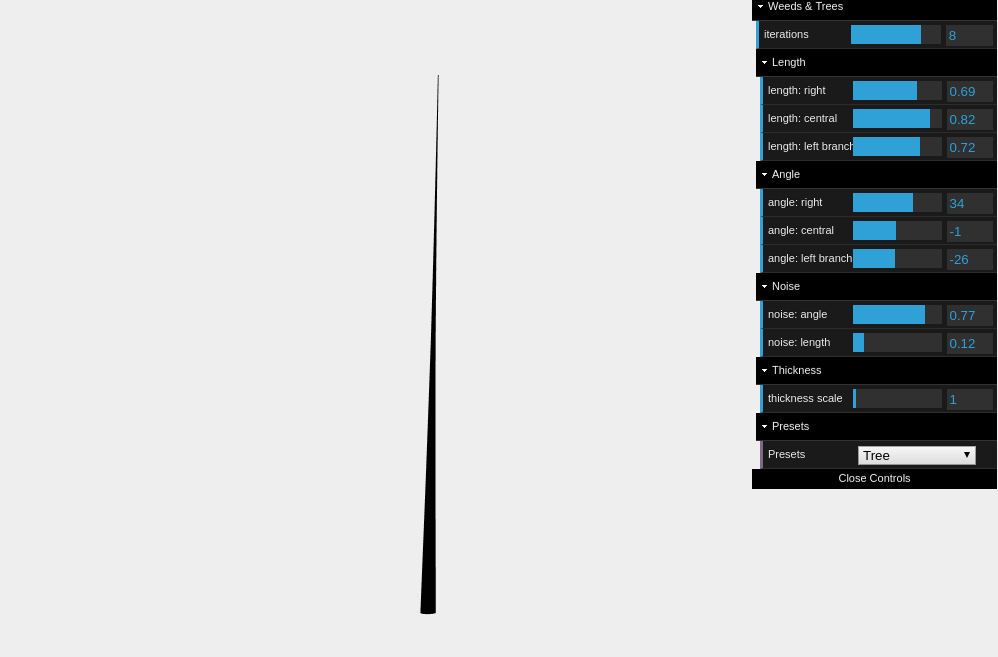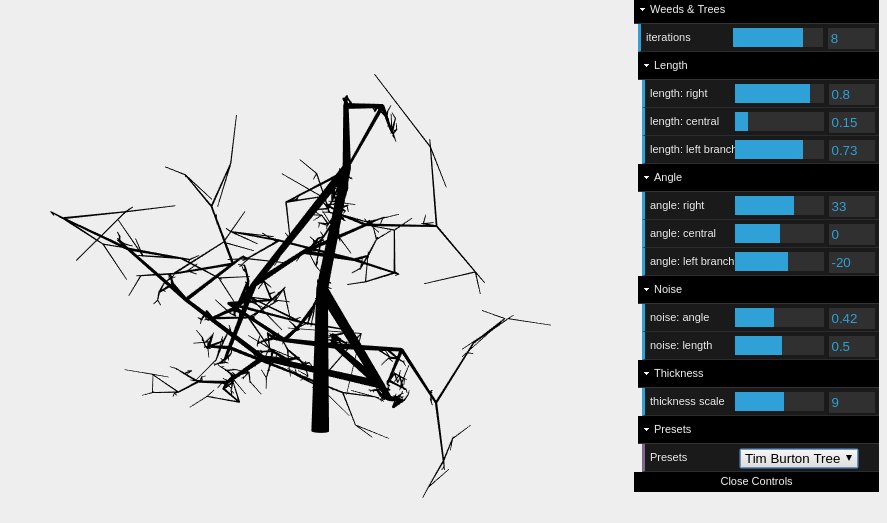Weeds & Trees (in Three.js)
Recently I have been working with the great 3D javascript library for webGL, three.js. After progressing through the various tutorials available I started looking for something interesting to implement using the library that wasn’t just making boxes.
Humboldt-University have a great section of Complexity Explorables which they describe as
A collection of interactive explorable explanations of complex systems in biology, physics, mathematics, social sciences, epidemiology, ecology and other fields….
One of the examples I particularly liked was using a simple iterative method to generate trees and branching patterns using the d3 library.
Obviously, this is in 2d, so I thought it would be interesting to see if this algorithym could be generalised to 3D tree generation.
Initially I did a straight port of the algorithm in the source code to three.js:
Obviously, that’s just a flat structure, and if you rotate it 90 degrees, it gives the game away;

My initial attempts at rotating in 3D were not entirely successful. Though for the “Tim Burton Tree”, it’s not actually far off what you would expect

def print_hi(name)
puts "Hi, #{name}"
end
print_hi('Tom')
#=> prints 'Hi, Tom' to STDOUT.#References#
http://jasser.nl/fractal/
Check out the Jekyll docs for more info on how to get the most out of Jekyll. File all bugs/feature requests at Jekyll’s GitHub repo. If you have questions, you can ask them on Jekyll Talk.